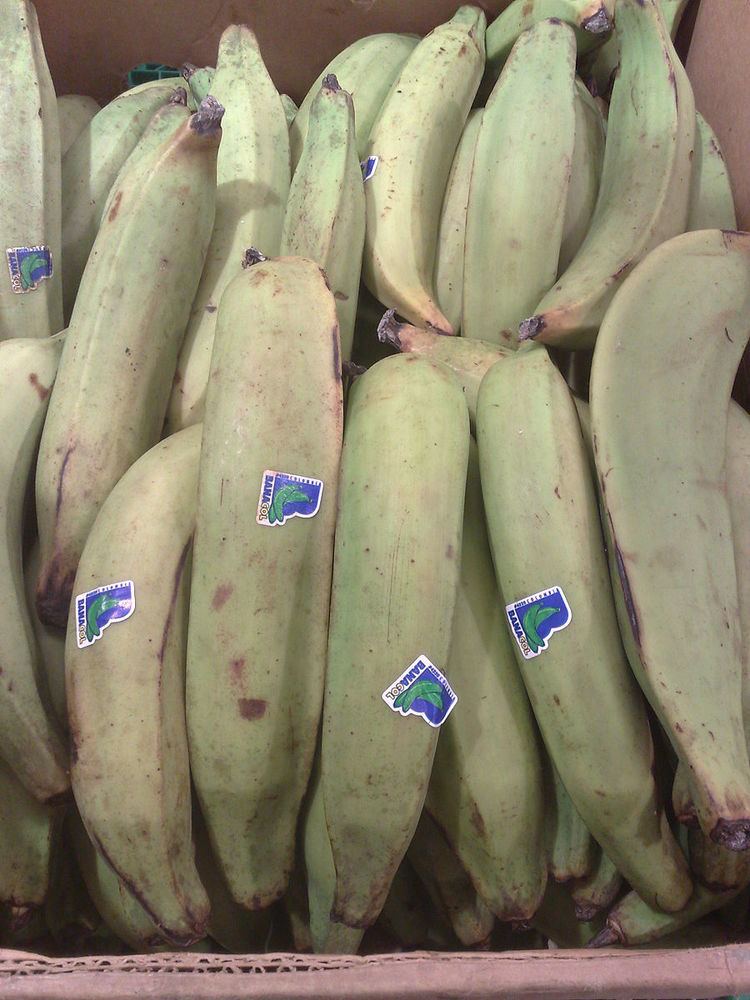Genus Banana | ||
 | ||
Hybrid parentage M. acuminata × M. balbisiana Cultivar group AAB Group, Plantain subgroup Origin Southeast Asia, South Asia Similar Banana, Rhino Horn bananas, Karat banana, Señorita banana, East African Highland | ||
"True" plantains are a group of cultivars of the genus Musa (bananas and plantains) placed in the Plantain subgroup of the AAB genome group. The term "plantain" can refer to all the banana cultivars which are normally eaten after cooking, rather than raw (see cooking plantain), or it can refer to members of other subgroups of Musa cultivars, such as the Pacific plantains. True plantains are divided into four groups based on their bunch type: French, French Horn, False Horn and Horn plantains.
Each bunch type has a variety of cultivars associated to it - i.e.:
In the 1990s, the International Institute of Tropical Agriculture published two guides to help scientists and farmers identify plantains in West Africa and support their cultivation.
References
True plantains Wikipedia(Text) CC BY-SA
